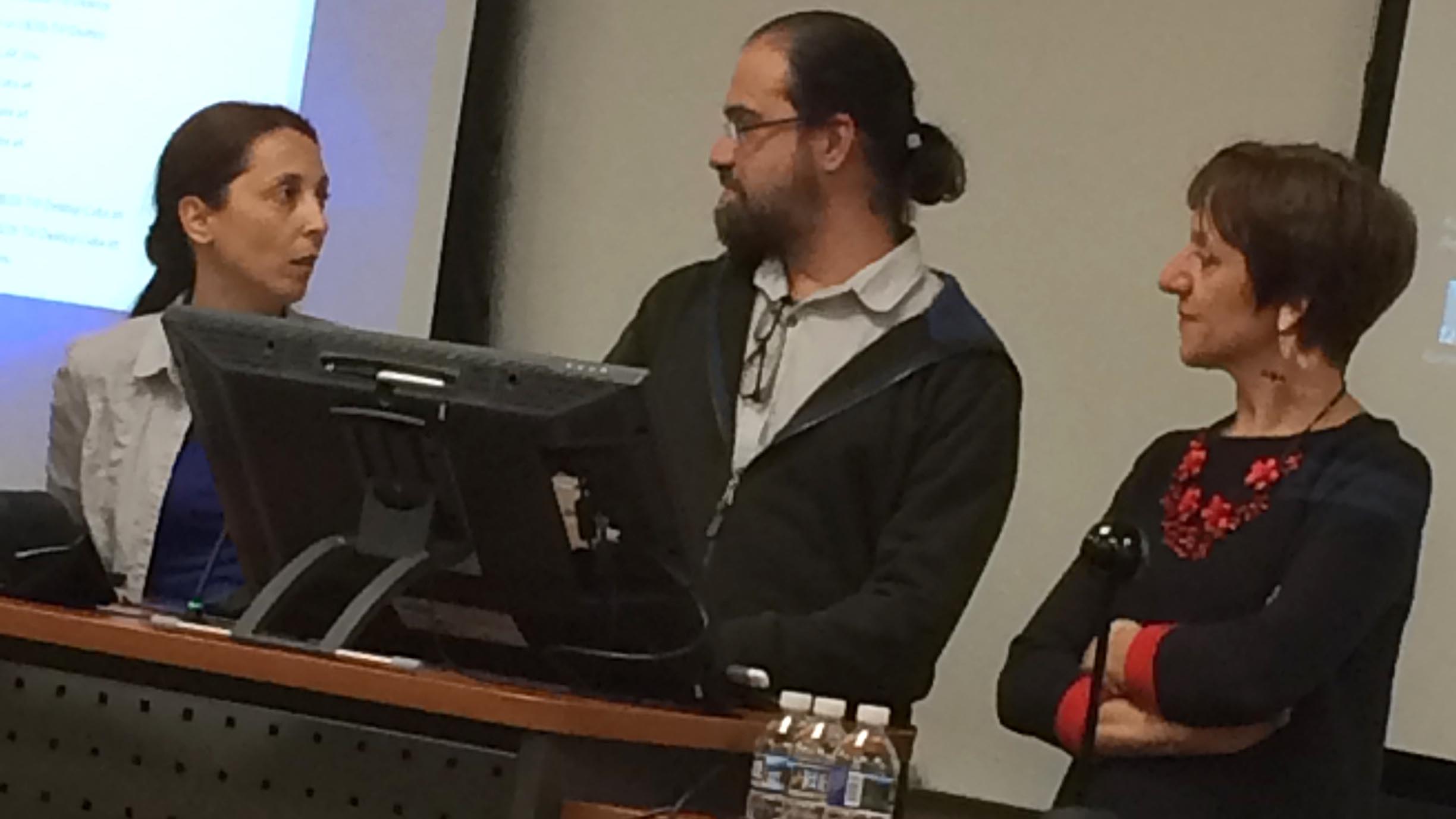Cuban artists provided insights into artistic expression within a communist country during a presentation at Cal U.

From left to right: Artist Yamiliany Morales Ferras, artist Duhamel Xolot and gallery owner Christine Frechard.
The Cub'Art exhibition, which ran from April 16-21 the in the third-floor gallery at Manderino Library, featured the works of artists Yamiliany Morales Ferras, Dayron Simon, Jesus Gastell, Duhamel Xolot and Jose Luis Cabrera Restoy.
On April 17, artists Ferras, Xolot and Gastell, along with Christine Frechard, who owns an art gallery in Pittsburgh's Squirrel Hill neighborhood, visited the Cal U campus and made two presentations that put their art into a broader context.
They first met with students from five area high schools for a presentation that included a talk on human rights and genocide in Latin America by Dr. John Cencich, an international war crimes investigator and a professor in the Department of Criminal Justice.
Afterward, the artists held a panel discussion for the public.
Frechard explained how visiting Cuba inspired her to bring not only the art, but also the artists, back to Pittsburgh and to Cal U.
"The (Cuban) people are very kind, and their amazing art is very connected to nature," said Frechard, who is a friend of Andrea Cencich, an instructor in the Department of Art and Languages.
"The island is beautiful, but life is hard for Cubans," she said, noting that many citizens cannot afford telephone and internet access. "I found they looked at art as an escape."
Even when artists use newer digital methods, Xolot said Cuban roots and traditions remain influential.
"People fall in love with it because its unique, and much of it does not change," he said. "Old neighborhoods remains the same, and you always know where you are."
Ferras commented that Cuban artists are able to convey their thoughts more freely than most people living in the communist country.
"There's really no holding back, and artists always find a way to express themselves," she said. "Through their work, I believe artists are even somewhat visionaries who can enhance social movements."
Sophomore biology major Evencia Rubledo enjoyed seeing how Xolot incorporated older
automobiles into many of his pieces portraying Cuban neighborhoods. The classic cars
are common in Cuba, where the government banned the import of cars and car parts for
many years.
"I have always found art fascinating and beautiful, because you can turn anything
into art," she said. "It's very interesting to see how different cultures are and
how, through art, they can still express themselves despite the difficulties.
"The nature scenes were exceptional."
The event was sponsored by the Office of the President and the Art and Languages Department; co-sponsors were Manderino Library, the Criminal Justice Department, the international studies program and the College of Liberal Arts.
Organizers of the Cuban art events at Cal U were Andrea Cencich; Sabrina Hykes-Davis, of the Music and Theatre Department; and Monica Ruane Rogers, of the Library Services Department.
